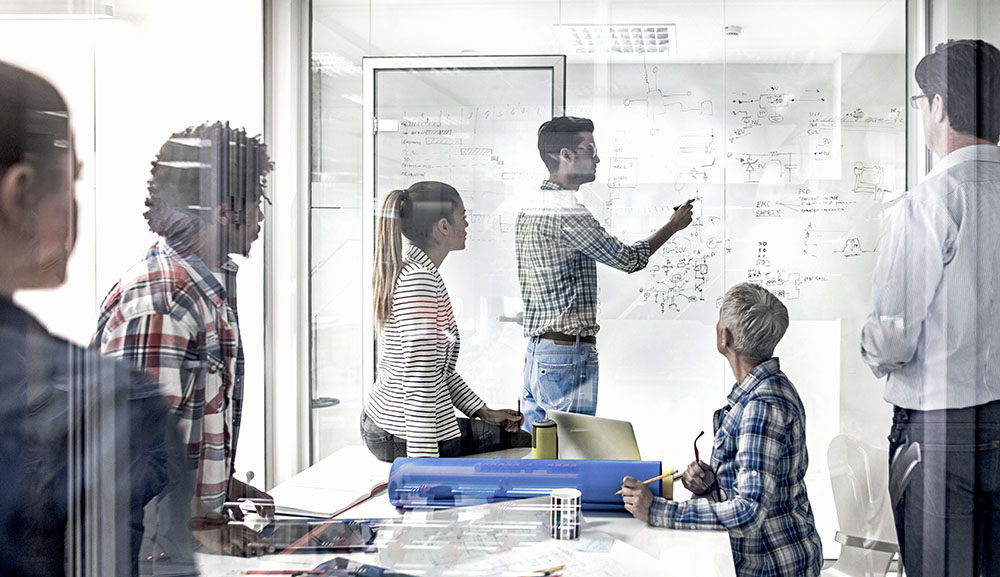Exploring the importance of diversity in engineering project teams

Engineers are often so focused on product design that the consumer can become an afterthought. This can become particularly problematic when there is a lack of diversity on the project team— without diversity, we lack a proper understanding of the full population we’re designing for, and consumer needs can be neglected or misunderstood.
Often, these types of design oversights are minor: struggling to reach the top shelf at a store designed for the average male height, for example, or feeling cold in an office where the temperature is based on the average male metabolic rate.
But often, these design flaws are more serious. We must ask ourselves why these flaws exist in the first place, and what we can do to fix the problem.
Why diverse project teams and human-centered design processes are important
Until 2011, car safety testing was done using a dummy whose measurements matched those of the 50th percentile male. Even today, the most commonly used dummy is 5 feet, 8 inches, and weighs 167.55 pounds and has a male body composition. [1]
As a result, when a woman is in a car crash, she is 47% more likely to be seriously injured than a male. She’s 71% more likely to be moderately injured, and 17% more likely to die. [1]
In 2011, a female crash test dummy was introduced, but this model presented simply as a scaled-down version of the male version; while her height and weight were lower than her predecessor, the new dummy still didn’t account for a difference in bone density, spinal column, or muscle mass, and certainly didn’t account for the pregnant population. [1]
A diverse product team and a human-centered design process can extend the range of the target demographic and avoid serious safety implications.
Similar design flaws exist when we examine the proper fitting of PPE on frontline workers; specifically, police armor on women. Most PPE sizing is based on the average US and European male. If an officer sizes outside of this range, a smaller or larger size is ordered.
Sounds simple until the chest measurement of a protective vest on a man versus a woman is considered alongside the importance of protecting every millimeter possible against a stab wound or bullet.
A diverse product team and a human-centered design process can extend the range of the target demographic and avoid serious safety implications.
We need changes in the design process if we want to become more human-centered and increase the empathy and thought we put into curating a product for all end users. This starts with diverse team involvement.
Diversity in engineering: why we need it, and how it is improving the workplace
Society still sees engineering as a white male profession, and there are statistics to support this preconception: although women make up more than half of US and Canadian university graduates, only 20% of engineering graduates are women [2]. And the gap continues to widen when we look at the workforce: of all the licensed engineers in Canada, only 13% of them are female [2].
The lack of diverse role models creates countless missed opportunities, but diversifying project teams can directly challenge society’s view of the engineering profession by encouraging a new generation of diverse engineers and expanding the pool of new and upcoming talent in the industry.
BHP, the largest mining company in the world by capitalization, has made a commitment to creating a 50/50 gender-balanced workforce by 2025 [3]. As diversity within their teams continues to grow, the data is showing that diverse teams are consistently outperforming others: safety statistics, company culture, and employee productivity have all increased [3]. These teams are also more likely to collaborate, speak up, and make better decisions as a group.
Teck Resources, one of Canada’s leading mining and natural resource companies, has initiated women and Indigenous employee research groups and included unconscious bias training into their leadership development programs. Together with Hatch, they have also begun to create a diverse and inclusive design guideline to support their internal project teams.
These are only two examples of companies who are putting diversity in engineering at the forefront. By making these improvements, we can begin the process of becoming more human-centered engineers with inclusive and innovative solutions and end-products.
Positive outcomes
Global studies show that the analytical abilities of diverse groups have yielded unsurprising results: diverse panels are better at collecting evidence, analyzing information, making decisions, and improving performance [4]. Employees of a diverse team demonstrate a lesser fear of failure, a higher instance of innovation and problem solving, and a higher level of employee engagement [5].
We see the potential in diverse teams and design and have started by updating many of our internal workflows and procedures. Most recently, we’ve started tracking gender diversity on all of our major projects and have begun to modify existing facilities to be inclusive of the diverse workforce of the future.
By implementing diverse product teams, we’ve gained a deeper understanding of the population we’re designing for and have been able to create smarter teams and a more fulfilled workforce. We’ve gained the knowledge and understanding to help you design the diverse projects and workplaces you envision.
We’ve also implemented a diverse and inclusive design toolkit to help project teams identify and address unintended barriers. These tools encourage best practice in our designs and will better equip our teams in the project design phase to ensure that our clients' projects are inclusive and accessible to all.
Join us in congratulating Jocelyn Lim on the successful completion of her co-op placement at Hatch, and contact Laura Twigge-Molecey to find out more about how we’re implementing diverse project teams at Hatch.
References
[1] "The deadly truth about a world built for men – from stab vests to car crashes," 23 February 2019. [Online].
Available: https://www.theguardian.com/lifeandstyle/2019/feb/23/truth-world-built-for-men-car-crashes.
[2] LinkEngineering, "Diversity Improves Engineering Design," [Online].
Available: https://www.linkengineering.org/Explore/LE_Blog/45554.aspx. [Accessed 14 April 2023].
[3] T. M. A. o. Canada, "Diversity and Inclusion Initiatives In Canada's Mining Industry," 3 December 2021. [Online].
Available: https://mining.ca/our-focus/corporate-responsibility/diversity-and-inclusion-initiatives-in-canadas-mining-industry/. [Accessed 13 April 2022].
[4] "Why Diverse Teams Are Smarter," 19 March 2019. [Online].
Available: https://hbr.org/2016/11/why-diverse-teams-are-smarter.
[5] "The five business benefits of a diverse team," 8 February 2022. [Online].
Available: https://www.managers.org.uk/knowledge-and-insights/listicle/the-five-business-benefits-of-a-diverse-team/.
